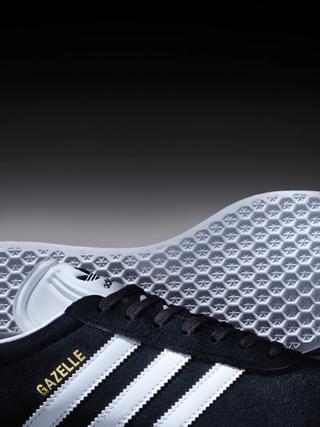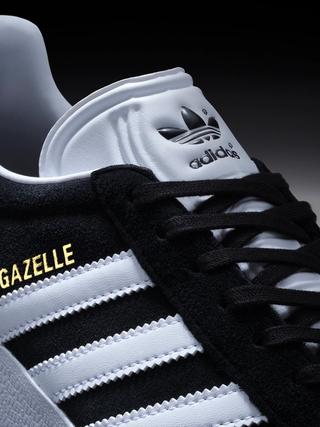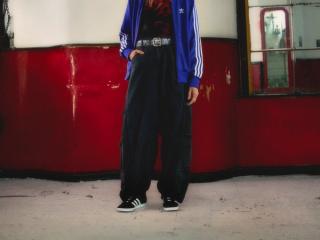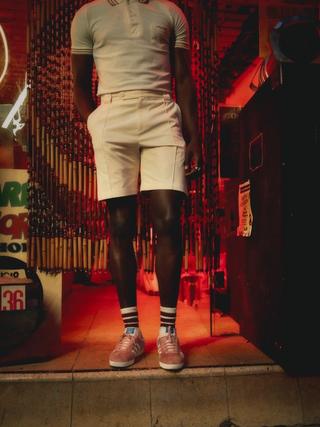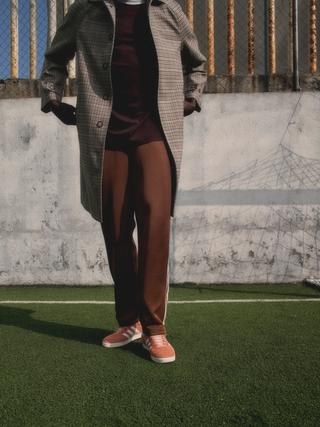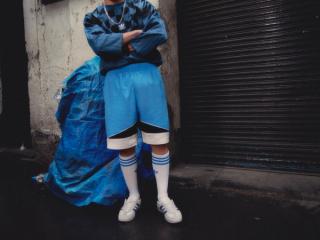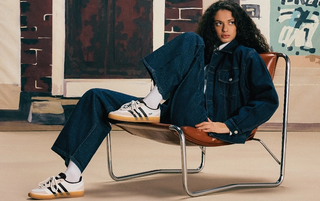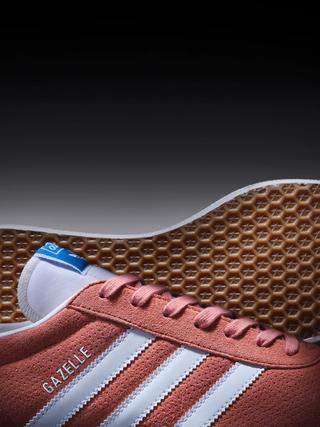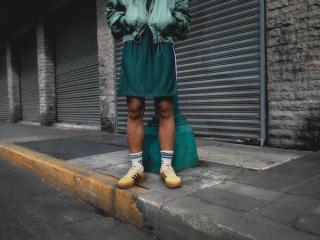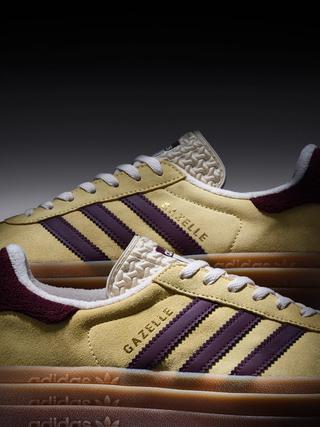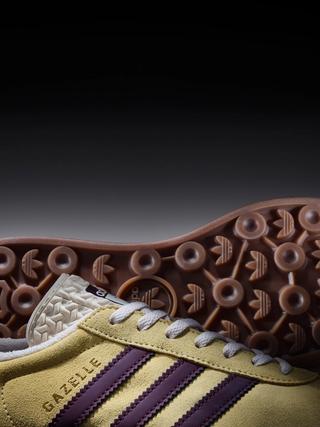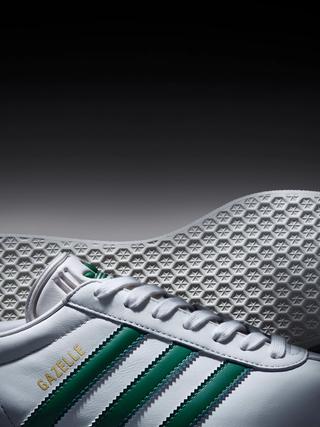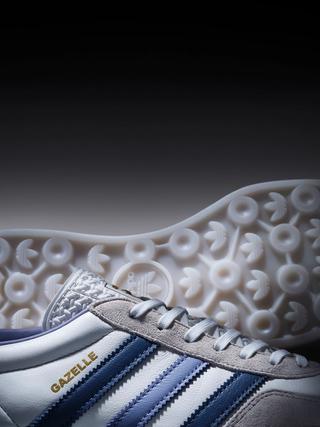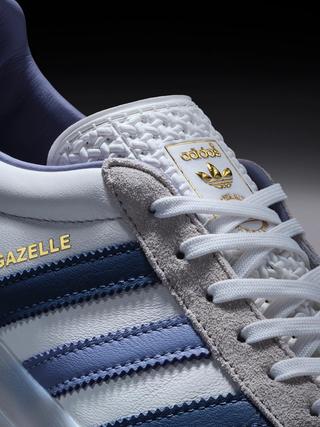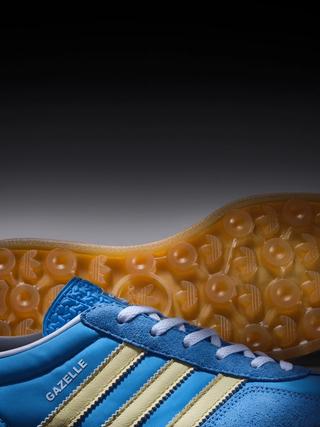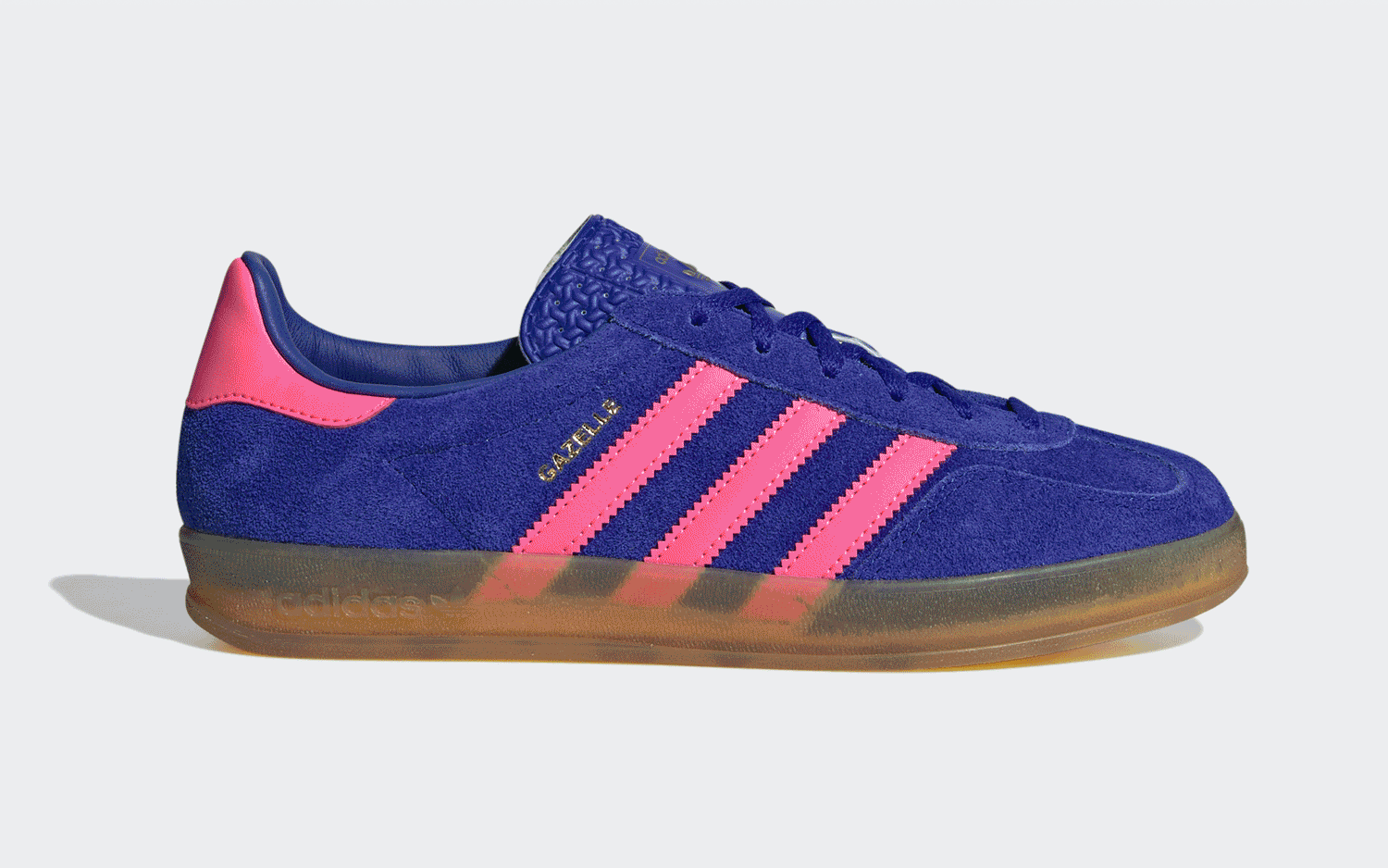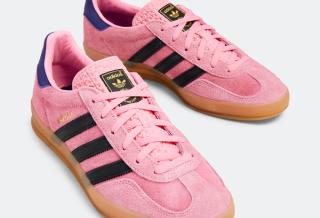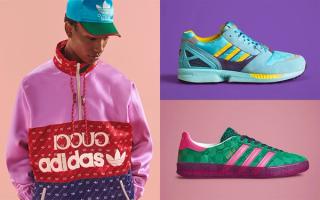Unless you've been living under a rock over the last two years, you're likely well aware of the prolonged moment adidas Originals is having. It's near-impossible to go anywhere without seeing a low-profile, 3-Stripes-branded sneaker. And while the success of these styles might be perceived as "overnight," it's decades in the making.
The German sportswear brand has always been committed to changing the world through sports. Today, more than 70 years from its founding, the company is still dedicated to its founder's mission. Along the way, however, some of its innovative trainers have transcended the track, basketball court, and football pitch to become icons with no adherence to age, race, gender, or culture.
Adidas footwear that falls under this umbrella is expansive, but this story shines the light on the Gazelle. Continue ahead to read about the sneaker's history and legacy. You can find all current styles via adidas.com/gazelle in sizing for Men, Women, Youth, and Infants.

1960s: Sport-First
Before the Gazelle, there was the Olympiade.
The low-profile silhouette laid the foundation for what would be relaunched as the adidas Gazelle by 1966. Reinforced suede panels across the upper delivered a high-quality, durable, and lightweight package for countless athletes of the era. The trainer was offered in two different colors at launch: blue and red. The former featured a microcellular rubber outsole that enabled a versatile training regiment, while the ruby-colored style sat atop a transparent herringbone sole fine-tuned for less harsh use indoors.
The oldest prototype in existence of the adidas Gazelle is a red pair from 1965. Branding appears horizontally on the lateral profile, and in blue on the top-of-the-tongue. The Achilles' heel area includes a fold-over tab similar to the blinker found on many current Adizero Running designs.
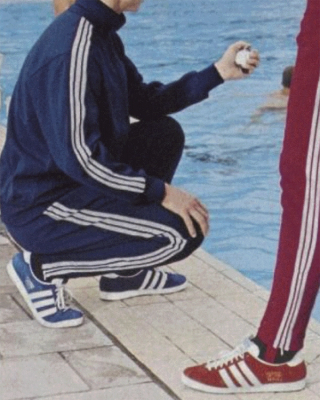
1970s: Time to Experiment
By the turn of the decade, the adidas Gazelle had won over casual athletes. Its inclusion in advertisements of the Beckenbaur Tracksuit helped the low-to-the-ground athletic sneaker stand out amongst other designs of the time.
During this period, the Three Stripes utilized the model as a canvas for a number of experiments. Although handfuls of tweaks never hit the market, one that did was the hexagon-shaped traction pattern launched in '71. The rework enhanced performance for the time, and continues to appear on standard editions of the Gazelle.
Up until the early 1980s, the sneaker had different names across different regions. In Mexico, for example, the model was known as the adidas Mexicana. Both original pairs of the Gazelle were known by their colors (Chamois (blue) and Rubis (red)) in France.

1980-99: A Return to the Spotlight
With advancement to performance technology, the Gazelle no longer had a place within the cutting-edge of sport. By the mid-1980s, adidas had reintroduced the silhouette to market as a leisure shoe.
Subcultures across the world gravitated to the silhouette, which was now available in eight different colors and with a more resilient nubuck construction across the upper. Ravers in London, football hooligans in Manchester, and hip-hop pioneers in the Bronx were amongst the Gazelle's newest audience when it relaunched.
As Y2K inched closer, the Three Stripes team continued to experiment with its mid-'60s creation. One of the boldest results was the Gazelle Beach slide, a design that got rid of most of the sneaker in order to create an easy-to-wear slip-on rooted in heritage. The model has been quietly reissued across the globe, keeping an overlooked part of the Gazelle's legacy alive.
Additionally, the German sportswear giant developed a version of the vintage trainer constructed from recycled materials. The experiment reflected the brand's growing commitment to sustainability, which has replaced virgin polyester with recycled polyester wherever possible since 2024.
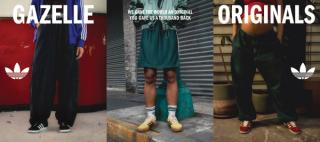
2000s: An Original Cemented
The adidas Originals platform was established in 2001. The division allowed the brand to introduce some of its most important performance products from over the years for the fashion space. Denoted by the use of its trefoil logo, Originals has successfully reissued the Samba and Superstar, amongst other designs from the expansive adidas Archive.
The Gazelle reentered the brand's lineup of products in the form of the Gazelle Vintage. The pair was inspired by the sneaker's original appearance. Additional iterations played with proportions and materials in order to deliver a more appealing version to some of the niche communities that had adopted the Gazelle over the years.
The versatility of the mid-'60s design always shone through.

2016-2025: Heritage Reimagined
During Summer 2016, the Originals team reintroduced the Gazelle to the market. The push coincided with the debut design's 50th anniversary. Over the next few years, the retro style enjoyed waning levels of popularity thanks to the occasional celebrity co-sign.
In March 2024, the Three Stripes introduced the "1000 Back" campaign. Focused on some of the most popular Originals offerings, the initiative reenergized the Gazelle with a slew of bold inline looks and experimental high-profile collaborations.
Benito Antonio Martínez Ocasio—known across the globe as Bad Bunny—has used the Gazelle Indoor as the base for some of his projects. Edison Chen turned the sneaker into summer-ready espadrilles. The pair, co-signed by BLACKPINK's JENNIE, reimagined the design's heritage in a way no one could've imagined when the Gazelle was introduced as a training model. Gucci has also reworked the model, showcasing its ability to seem right at home in the elevated world of high fashion.
Today, the adidas Gazelle is offered in dozens of different looks and in sizing for the whole family. The standard version is a favorite of Lionel Messi and Inter Miami C.F., while the Women's Gazelle Bold literally takes the sneaker to new heights via its stacked soles.
In 2026, the Gazelle will celebrate its 60th anniversary (although its prototype celebrates the milestone this year). The celebration will surely include special activations, limited edition collaborations, and more inline goodness so that everyone can enjoy the iconic sneaker.
Visit adidas.com/gazelle to shop all available styles of the adidas Gazelle.
